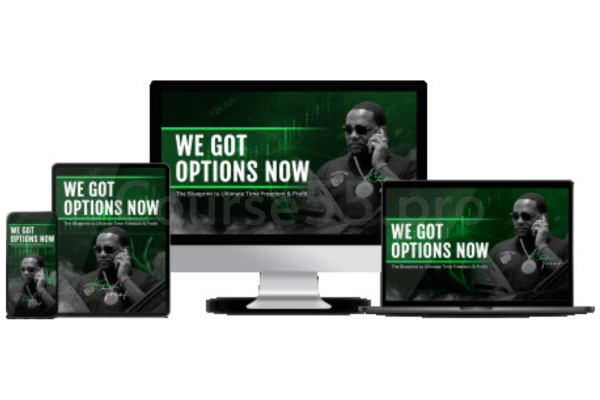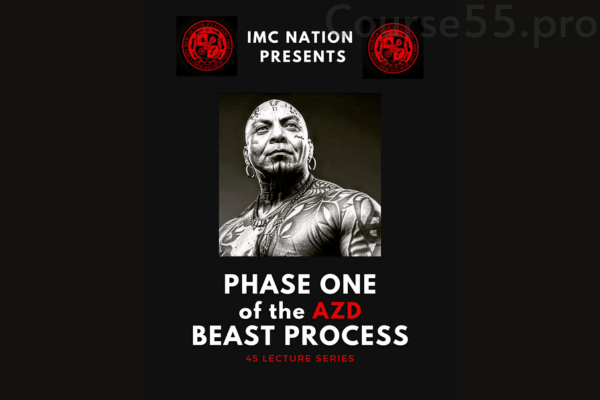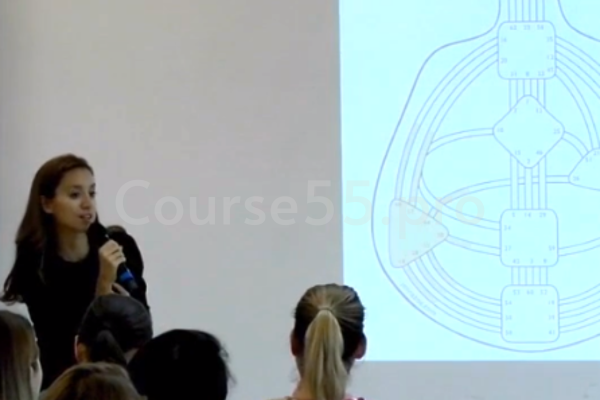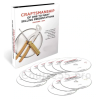-
×
 We Got Options Now Course By Kevin Frink
1 × $233.00
We Got Options Now Course By Kevin Frink
1 × $233.00 -
×
 Demartini Method Training Program AUS Aug 2020 (Videos Only) By John Demartini
1 × $311.00
Demartini Method Training Program AUS Aug 2020 (Videos Only) By John Demartini
1 × $311.00 -
×
 Digestive System: Restore, Repair & Rejuvenate (Advanced Version) By Spirituality Zone
1 × $15.00
Digestive System: Restore, Repair & Rejuvenate (Advanced Version) By Spirituality Zone
1 × $15.00 -
×
 OBM School Accelerator By OBM School
1 × $419.00
OBM School Accelerator By OBM School
1 × $419.00 -
×
 THE FULL PACKAGE! 8 COURSES By InTheMoneyStocks
1 × $443.00
THE FULL PACKAGE! 8 COURSES By InTheMoneyStocks
1 × $443.00 -
×
 Tensegrity Medicine Mentorship Online - Level One Online Training By Kelly A Clancy
1 × $311.00
Tensegrity Medicine Mentorship Online - Level One Online Training By Kelly A Clancy
1 × $311.00 -
×
 Hey U Human - 23 Courses Bundle By Sara Longoria
1 × $389.00
Hey U Human - 23 Courses Bundle By Sara Longoria
1 × $389.00 -
×
 The Manifestation Collective Certification (SEMESTER 1) By Kimberley Wenya
1 × $311.00
The Manifestation Collective Certification (SEMESTER 1) By Kimberley Wenya
1 × $311.00 -
×
 Complete Course Library (7 Courses Bundle) By Click Minded
1 × $419.00
Complete Course Library (7 Courses Bundle) By Click Minded
1 × $419.00 -
×
 Mastering the Complex Sale 2021 By Jeff Thull
1 × $389.00
Mastering the Complex Sale 2021 By Jeff Thull
1 × $389.00
Craftsmanship of One to Many Selling By Magnetic Marketing
$1,597.00 Original price was: $1,597.00.$62.00Current price is: $62.00.
SKU: C55pro. 8828TS4g0pkp
Category: Download
Tags: Craftsmanship of One to Many Selling, Magnetic Marketing
Download Craftsmanship of One to Many Selling By Magnetic Marketing, check content proof here:
The skillful use of magnetic marketing in one-to-many sales
Being able to connect with an audience and communicate effectively becomes a true art form in a world full of options and diversions. This need is aptly captured in Dan Kennedy’s program on the art of one-to-many selling. It offers a revolutionary method of sales and marketing that expands solutions from one-on-one encounters to large audiences. Whether you’re a seasoned marketer, an aspiring business owner, or someone who just wants to improve their communication skills,
Kennedy’s insights open the door to not only comprehending but also becoming an expert in the art of effective communication. This training curriculum provides a wealth of practical insights based on the subtleties of customer behavior, using concepts drawn from years of experience. Let’s delve deeper into the core elements of this training, explore its significance, and analyze how it can reshape sales strategies.
The Transition from One-to-One to One-to-Many: An Understanding
Seeing a talented potter transform a lump of clay into a stunning vase is the equivalent of switching from old sales models to one-to-many selling. Every change in the process reflects the tactical adjustments required for selling. In today’s fast-paced digital marketplace, the traditional paradigm—where value was frequently given through personal interactions—has undergone a radical evolution.
Kennedy stresses the significance of crafting communications that appeal to a large number of prospective customers at once. This shift involves more than just broadcasting; it involves developing stories that captivate, intrigue, and convert. Like a chef who doesn’t just combine ingredients to make a dish that appeals to a wide range of palates, it necessitates knowing what the audience wants in the end. Consequently, the heart of this shift lies in communication strategies that prioritize a broad appeal while retaining personal touches.
Consider a neighborhood bakery that used to rely only on foot traffic and individualized service to demonstrate this shift. They were able to reach customers outside of their immediate area when they implemented one-to-many selling tactics using email marketing and social media. Their success emerges not just from wider reach, but also from the ability to share compelling stories about their products, connect with customers on emotional levels, and create a vibrant community around their brand.
Crucial Components of Successful One-to-Many Marketing
- Compelling Messaging: Craft messages that resonate with a wide audience while addressing common pain points.
- Understanding Consumer Behavior: Know what drives consumer decisions and preferences to tailor offerings effectively.
- Leveraging Media Channels: Utilize various online and offline media to reach and engage larger audiences.
- Emotional Connections: Build relationships with potential customers that go beyond mere transactions, fostering loyalty and repeat business.
In sum, the craftsmanship of one-to-many selling is a deliberate shift in approach a new way of thinking about communication and the nuances of selling that prioritizes the collective over individual interactions.
Developing Your Communication Skills
Kennedy’s lessons are based on the knowledge that careful, purposeful communication is the foundation of effective marketing. It highlights that the core of sales is the conversation we have with our audience. Kennedy contends that telling captivating stories is the key to effective communication, which goes beyond simple marketing speak.
Magnetism, or the capacity to draw in your target audience with enticing stories and offers catered to their requirements, is at the core of this communication strategy. Customers are more likely to interact further when they feel heard. Consider communication as a bridge; the more bridges a company can create, the wider its reach will be.
In this situation, effective communication involves a number of strategies:
- Storytelling: Narrate stories that evoke emotional responses, forging a deeper connection with your audience.
- Value Proposition: Clearly articulate why your product is essential to the audience’s life, making it easy to relate to.
- Feedback Loops: Encourage and actively seek out customer feedback to refine and adapt your marketing efforts continuously.
It takes effort and introspection to become proficient in these communication skills, much like an artist perfecting their craft. Companies that put a high priority on improving communication not only increase sales but also build a devoted clientele motivated by similar values and trust.
Crucial Methods for Effective Communication
- Captivating Images: To make your messaging more enticing and remembered, include images.
- Active Listening: Consider the demands and input of your customers and use that information to modify your strategy.
- Unambiguous Call to Action: After interacting with your message, give prospective clients clear instructions on what to do next.
By embedding these techniques into their sales strategies, businesses can create a magnetic presence in their respective markets, drawing in a loyal audience eager to engage.
Making Offers That Are Hard to Resist
Kennedy highlights one crucial idea: making offers that are too good to refuse. These deals must surpass customers’ expectations in addition to meeting their needs. With so many options available to consumers in today’s market, standing out becomes essential. Kennedy contends that success rates can be significantly impacted by designing packages or solutions that offer indisputable value.
An offer’s worth is determined by its emotional resonance. It’s like a chef creating a dish that’s not only satisfying but also a taste explosion that stays with you long after you’ve eaten it. In a similar vein, attractive offerings are more than just a product; they entail developing a whole experience that precisely addresses the wants and desires of the target audience.
To create such offers, Kennedy suggests focusing on several key components:
- Product/Service Bundling: To increase perceived value, group related products or services together.
- Limited-Time Offers: Create a sense of urgency to get potential clients to act right away.
- Bonuses and incentives: To make the purchase sweeter, add extra value like free trials or special access.
Irresistible Offer Components
- Clarity: Make sure the offer is simple to comprehend.
- Relevance: To make sure offers are compelling, customize them according to customer segmentation.
- Exclusivity: To increase attractiveness, frame offers as exclusive benefits only available to a chosen group of clients.
By focusing on these components, businesses can create offers that not only attract attention but also convert interest into tangible sales.
Using Magnetic Marketing to Implement Strategic Marketing
All of the ideas covered thus far are encapsulated in the creation of a marketing plan. Effective selling, persuasive offers, and communication are all held together by magnetic marketing. It cultivates a mindset centered on comprehending and providing better customer service rather than just teaching methods.
Kennedy’s method challenges marketers to reconsider their tactics and place more importance on building connections and ensuring customer pleasure than just transactions. This calls for a different viewpoint that sees clients as complex individuals with distinct needs and preferences rather than just target demographics.
In implementing this strategic marketing framework, it is vital to consider:
- Market research: Make an investment to learn about consumer bases, assess preferences, and examine the advantages and disadvantages of competitors.
- Content Development: Produce excellent content that inspires, informs, or amuses the audience in order to increase brand credibility.
- Channel Optimization: Assess and select the best ways to reach the intended audience; take into account the influence of social media, SEO tactics, and webinars or workshops.
Steps to Execute Strategic Marketing
- Research and Analyze: Understand your audience through surveys, interviews, and market analysis.
- Develop Engaging Content: Use blogs, videos, and social media posts to deliver value to your audience.
- Monitor Performance: Use analytics to track effectiveness and refine marketing strategies accordingly.
By weaving these strategies into a cohesive plan, businesses can enhance their reach and effectiveness, turning interactions into meaningful connections that drive sales.
Analytical measurements for assessing success
The ability to modify and adapt in response to analytical insights is a hallmark of successful marketing. Businesses are encouraged to regularly assess their performance using Kennedy’s framework. In a world that is changing at a dizzying rate, it is crucial to know which tactics work and which require improvement.
Businesses may clearly demonstrate their effectiveness by using data metrics and client feedback. This analytical method is, in many respects, the compass that directs companies on their marketing path. It entails looking at indicators related to client happiness, conversion rates, and engagement.
Important metrics might consist of:
- Lead Generation: Measure the number of leads generated from specific campaigns.
- Conversion Rates: Track how many leads convert into actual sales.
- Customer Retention: Evaluate repeat business to understand customer loyalty.
Metrics for Success
| Metric | Definition | Importance |
| Lead Generation | Total leads generated from campaigns | Indicates visibility and interest |
| Conversion Rate | Percentage of leads converting to sales | Measures effectiveness of offers |
| Customer Retention | Number of repeat customers | Reflects loyalty and satisfaction |
A company may remain relevant and responsive to the changing needs of its audience by being able to adjust its operations based on these criteria.
In conclusion
Magnetic marketing’s skillful one-to-many sales approach goes beyond the conventional view of sales and ushers in a new era that embodies relational marketing and effective communication. In addition to offering priceless insights, Dan Kennedy’s program gives people and businesses the resources they need to succeed in the cutthroat industry. These principles are applicable to many markets and industries, from using analytical insights to crafting compelling offers to communicating brilliantly.
In the end, becoming proficient in one-to-many selling involves more than just closing deals; it also entails building relationships, improving client interactions, and guaranteeing a long-term business plan where expansion, engagement, and satisfaction flourish. In the evolving landscape of marketing, adopting these principles is not merely advantageous; it is vital for long-term success.

Frequently Asked Questions:
Business Model Innovation:
Embrace the concept of a legitimate business! Our strategy revolves around organizing group buys where participants collectively share the costs. The pooled funds are used to purchase popular courses, which we then offer to individuals with limited financial resources. While the authors of these courses might have concerns, our clients appreciate the affordability and accessibility we provide.
The Legal Landscape:
The legality of our activities is a gray area. Although we don’t have explicit permission from the course authors to resell the material, there’s a technical nuance involved. The course authors did not outline specific restrictions on resale when the courses were purchased. This legal nuance presents both an opportunity for us and a benefit for those seeking affordable access.
Quality Assurance: Addressing the Core Issue
When it comes to quality, purchasing a course directly from the sale page ensures that all materials and resources are identical to those obtained through traditional channels.
However, we set ourselves apart by offering more than just personal research and resale. It’s important to understand that we are not the official providers of these courses, which means that certain premium services are not included in our offering:
- There are no scheduled coaching calls or sessions with the author.
- Access to the author’s private Facebook group or web portal is not available.
- Membership in the author’s private forum is not included.
- There is no direct email support from the author or their team.
We operate independently with the aim of making courses more affordable by excluding the additional services offered through official channels. We greatly appreciate your understanding of our unique approach.
Be the first to review “Craftsmanship of One to Many Selling By Magnetic Marketing” Cancel reply
You must be logged in to post a review.














Reviews
There are no reviews yet.